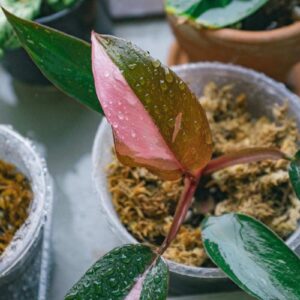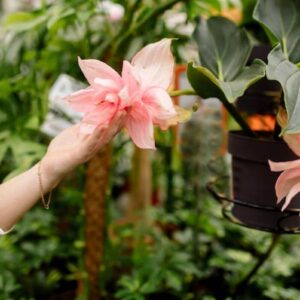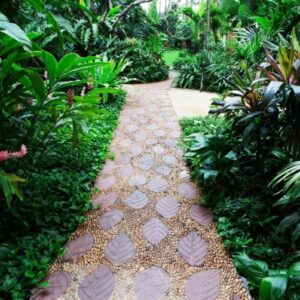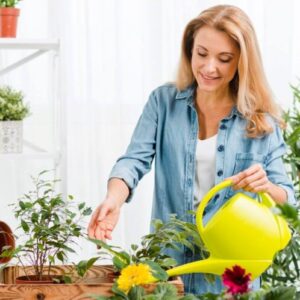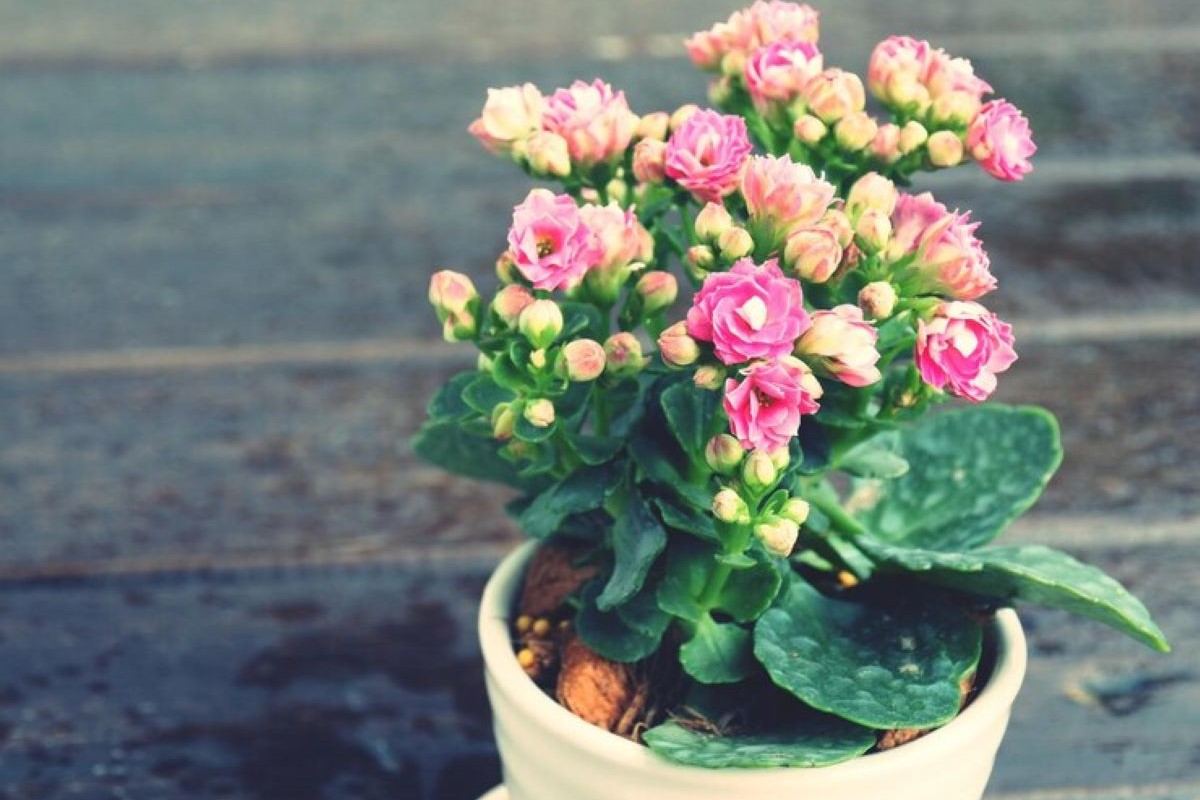
The Kalanchoe plant is renowned for its amazing qualities such as small blossoms and oval, scalloped leaves. There are more than 100 species in the genus, the most famous houseplant is Kalanchoe blossfeldiana, commonly referred to as “window’s thrill.” This variety produces clusters of tiny red, pink, yellow, orange, and white flowers.
This plant grows, and its species are native to Madagascar and tropical Africa, many are famous for their easy culture indoors. Kalanchoes, being succulents are relatively carefree houseplants that typically need plenty of direct sunlight, though they will survive bright indirect light and watering only when thoroughly dry.
Kalanchoe is a well-loved houseplant because it is drought-resistant and easy to grow. This plant can grow outdoors as a perennial in tropical and subtropical climates. It is normally grown as an indoor plant, in colder climates. It can rebloom indoors for many years if properly cared for.
Explore Kalanchoe’s basics, care, and more here.
Kalanchoe (Kalanchoe blossfeldiana) Overview
| Common name | Kalanchoe, flaming Katy, florists Kalanchoe, Christmas Kalanchoe |
| Family | Crassulaceae |
| Plant Type | Perennial, succulent |
| Bloom Time | Seasonal bloomer |
| Flower Color | yellow, red, orange, salmon, pink, white |
| Native Area | Africa |
| Mature Size | 6–18 in. tall and wide |
| Toxicity | Toxic to pets |
Kalanchoe Care
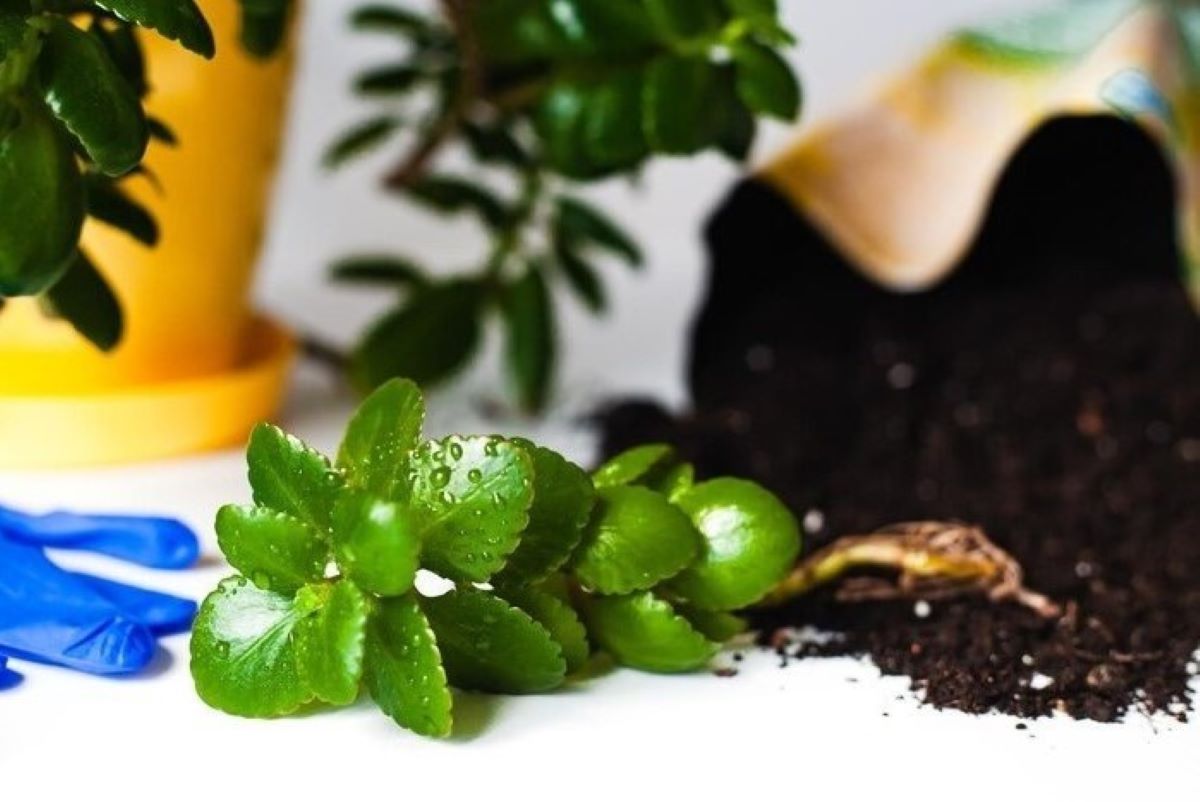
Caring for kalanchoe is quite easy as compared to other plants. All you need to remember and implement a few tips. Let’s uncover some tips and the right conditions that Kalanchoe requires to grow;
- For plating Kalanchoe uses loose, loamy, sandy potting medium, well-drained, such as succulent soil or cactus mix.
- For best growth keep Kalanchoe in a warm indoor with bright, indirect light or place it in a full-sun outdoor area that offers protection from the late afternoon sun.
- Make sure to let kalanchoe plants dry out completely between waterings.
Soil
Kalanchoe grows best in well-draining, loamy, and sandy soil. Indoor plants should be kept in a well-drained pot. Plant kalanchoe in a clay pot to ensure proper drainage and to prevent an overly moist environment. This will help wick excess water from the soil.
Light
Indoor kalanchoe plants thrive best in bright, indirect light. The best place for outdoor kalanchoes is in partial shade or full sun. Provide some afternoon shade to protect them from scorching if they are in full sun.
Water
In addition to requiring minimal watering, this plant only needs to be soaked every few weeks. Be sure to allow the soil to dry thoroughly in between watering to help prevent root rot.
Temperature and Humidity
Kalanchoe grows best in temperate between 55 and 85F. It doesn’t require creating a special indoor environment, except protecting them from rime.
Fertilizer
Comparable with many flowering plants, kalanchoe benefits from fertilization, though they are not heavy feeders. Garden-grown plants require just one light feeding in the spring. Kalanchoe should be provided with a well-balanced fertilizer blend once a month during the spring and summer.
Trimming
Pinching the stems of a kalanchoe will help maintain its shape and encourage healthier blooms. Trimming is one of the old ways to get rid of dead flowers to keep the plant tidy and encourage new growth. Preferably, this should be done late in the winter or early in the spring.
Potting and Repotting
Different from many pot-bound plants, Kalanchoe grows best when they’re repotted regularly. For optimal results, it is suggested to re-pot Kalanchoe once a year in the fall, after the plant has bloomed. This will promote new growth and increase the plant’s fullness. Choose a big container each time re-pot. However, if your plant hasn’t filled the pot with roots, you can keep it in the same pot and add a fresh layer of soil without changing the pot.
How To Encourage Kalanchoe To Flower
Kalanchoe thrives best when it is placed for 6 to 8 hours in bright light each day, it blooms with full potential if placed in such an environment. The plant should experience near-total darkness for the other hours of the day, during winter and fall. Plants need at least six weeks of complete darkness each day in order to store energy for future blooms.
About four months later, in the spring, you’ll be treated to bursts of colorful flowers that may last several weeks. In some areas of the country, Blooms can continue to bloom throughout the year with careful light management.
Kalanchoes can bloom year-round indoors, with the proper care and environment.
Common Problem With Kalanchoe
1. Wilting
Kalanchoe leaves can wilt if kept at a high temperature. It is preferred to keep plants below 80F.
2. Dull Or Scorched Leaves
Getting the right amount of light exposure is essential for good-looking plants Too little light and the leaves will lose their shiny green color. On the other hand, too much direct sunlight can cause the leaves to wilt and it will feel burned.
3. Failure To Bloom
If a kalanchoe does not bloom, it is often due to a lack of extended winter darkness that allows the plant to reset its bloom cycle. During the winter months, these plants need six weeks of nightly darkness to thrive. Without this reset, they typically would not bloom again.
Frequently Asked Questions
Q1. Is Kalanchoe an indoor plant?
Ans: Kalanchoe is often grown as a perennial houseplant and is a popular succulent. It grows well both indoors and outdoors and can bloom continuously throughout the year.
Q2. Does Kalanchoe like sun and shade?
Ans: This plant needs bright direct sunlight when grown indoors and at least 8 hours of direct sunlight outdoors.
Q3. Does Kalanchoe need a lot of water?
Ans: They do not need much water and native habitat they grow in arid areas. Kalanchoe is among very low-maintenance plants.
Q4. Are any succulents toxic to pets?
Ans: Yes, some succulents, such as Aloe Vera, Kalanchoe, and Jade Plant are toxic for pets. The ingestion of food can cause vomiting, diarrhea, and other serious health problems.


